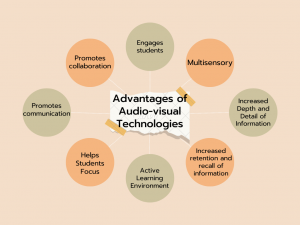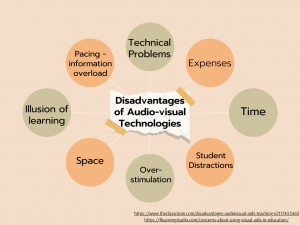Hey team!
This week we were asked to consider Neil Postman’s quote about Sesame Street where he mentions: “We now know that “Sesame Street” encourages children to love school only if school is like “Sesame Street.” Which is to say, we now know that “Sesame Street” undermines what the traditional idea of schooling represents.” My response back to this quote would be – “Is that such a bad thing???” Is it wrong to evolve from an outdated approach to education and move forward to a teaching approach that is more inclusive and student-centered that speaks to our current reality in the classroom?
 As a child born in the eighties, I grew up on Sesame Street. Yes, I loved the cute puppets and catchy songs that were presented throughout the show. But, I loved Sesame Street for so much more. To a four-year-old Latina who spoke absolutely no English at home, Sesame Street allowed me to follow along and understand storylines that were not overly complicated, and it gave me my first language lessons in English. Furthermore, Sesame Street gave me a sense of being represented which did not happen often in Regina, Saskatchewan back in the late eighties (remember we did not have YouTube back then so I could not bring up videos and songs in Spanish whenever I wanted to). It was probably one of the first contributing factors outside of my family that helped begin to mold my identity as well as influence my values. You cannot imagine how excited I would get when I would hear Spanish on the show and when I saw kids/people that looked like me on television (and they were not being represented stereotypically). The only other time in my childhood where I felt represented and considered on an educational level was in Grade 1 when my teacher – Mme Putman – took an interest in my identity and went above and beyond that year to connect with me. Of course, it helped that she spoke Spanish, so right away the bond was there when she would talk to me or my parents in Spanish. She was one of the two teachers throughout my schooling from kindergarten to Grade 12 that was of colour. Two whole teachers to represent me through my whole schooling is all I got (and they were not Latinx they just so happened to be of colour like I was), and I was considered lucky to have that representation at that time. Had it not been for a kid’s show, this little Latina girl living on the prairies would have had fewer opportunities to feel like she was represented throughout her childhood. For me that is HUGE and the work Sesame Street was doing with inclusion and diversity back at that time makes them pioneers for social justice in my eyes.
As a child born in the eighties, I grew up on Sesame Street. Yes, I loved the cute puppets and catchy songs that were presented throughout the show. But, I loved Sesame Street for so much more. To a four-year-old Latina who spoke absolutely no English at home, Sesame Street allowed me to follow along and understand storylines that were not overly complicated, and it gave me my first language lessons in English. Furthermore, Sesame Street gave me a sense of being represented which did not happen often in Regina, Saskatchewan back in the late eighties (remember we did not have YouTube back then so I could not bring up videos and songs in Spanish whenever I wanted to). It was probably one of the first contributing factors outside of my family that helped begin to mold my identity as well as influence my values. You cannot imagine how excited I would get when I would hear Spanish on the show and when I saw kids/people that looked like me on television (and they were not being represented stereotypically). The only other time in my childhood where I felt represented and considered on an educational level was in Grade 1 when my teacher – Mme Putman – took an interest in my identity and went above and beyond that year to connect with me. Of course, it helped that she spoke Spanish, so right away the bond was there when she would talk to me or my parents in Spanish. She was one of the two teachers throughout my schooling from kindergarten to Grade 12 that was of colour. Two whole teachers to represent me through my whole schooling is all I got (and they were not Latinx they just so happened to be of colour like I was), and I was considered lucky to have that representation at that time. Had it not been for a kid’s show, this little Latina girl living on the prairies would have had fewer opportunities to feel like she was represented throughout her childhood. For me that is HUGE and the work Sesame Street was doing with inclusion and diversity back at that time makes them pioneers for social justice in my eyes.
 Reading through Postman’s article, I found myself cringing at some of his perceptions of learning. I must bring up his logic behind the reasons why parents were so quick to embrace Sesame Street. I am going to have to strongly disagree with Postman when he mentions that Sesame Street “relieved them (parents) of the responsibility of teaching their preschool children how to read”. Well as a Grade 2 French Immersion Teacher whose outcomes are heavily linked with the responsibility of teaching her students how to read, I can attest that there is no magic video or application or website that can teach kids how to read and make them become successful readers. If it were that easy, every teacher would be streaming Sesame Street in their classrooms all the time. What I can share is that audiovisual technologies – such as videos, etc. – do have a place in the classroom and the learning process. Sunder’s research confirmed that Audio-visual technologies are an excellent TOOL that engages students and can enhance their learning when incorporated into our teaching correctly; he also explains that AV technologies can also help our students understand the information we are teaching them . If we incorporate Audio-visual technologies into our teaching with the purpose to support the concepts we are teaching, we make this tool meaningful to our students’ learning process. When used accordingly videos and Audio-visual technologies can enhance a concept we are teaching and push students to gain a better understanding of concepts being covered in the classroom. I believe Postman did not give our educators enough credit when writing this article and I believe the public understands that television is meant to entertain. However, I feel like a more adequate question to ask would be the following: Can television both entertain and educate our children when there is a qualified professional trained to give it purpose and meaning while integrating this technology into their teaching at appropriate times?
Reading through Postman’s article, I found myself cringing at some of his perceptions of learning. I must bring up his logic behind the reasons why parents were so quick to embrace Sesame Street. I am going to have to strongly disagree with Postman when he mentions that Sesame Street “relieved them (parents) of the responsibility of teaching their preschool children how to read”. Well as a Grade 2 French Immersion Teacher whose outcomes are heavily linked with the responsibility of teaching her students how to read, I can attest that there is no magic video or application or website that can teach kids how to read and make them become successful readers. If it were that easy, every teacher would be streaming Sesame Street in their classrooms all the time. What I can share is that audiovisual technologies – such as videos, etc. – do have a place in the classroom and the learning process. Sunder’s research confirmed that Audio-visual technologies are an excellent TOOL that engages students and can enhance their learning when incorporated into our teaching correctly; he also explains that AV technologies can also help our students understand the information we are teaching them . If we incorporate Audio-visual technologies into our teaching with the purpose to support the concepts we are teaching, we make this tool meaningful to our students’ learning process. When used accordingly videos and Audio-visual technologies can enhance a concept we are teaching and push students to gain a better understanding of concepts being covered in the classroom. I believe Postman did not give our educators enough credit when writing this article and I believe the public understands that television is meant to entertain. However, I feel like a more adequate question to ask would be the following: Can television both entertain and educate our children when there is a qualified professional trained to give it purpose and meaning while integrating this technology into their teaching at appropriate times?
 The current culture of educational technology is pushing us to move forward from the popular debate concerning educational technology – and whether it is more harmful or more beneficial to our students – and to consider the responsibility we have as educators to teach about digital citizenship seeing as our students are growing up in a digital age surrounded by technology. Scott Widman’s TED Talk does an excellent job of explaining that technology is here to stay and instead of wrestling with the idea of incorporating educational technology in the class, we need to educate ourselves on the technology that is available to us and to our students in an attempt to stay current and relevant to our student’s realities. Audio-visual technologies have been a constant in teaching ever since the Blackboard was created back in 1801 and has continued to evolve alongside many eras. Now that we are living in the digital age, Audio-visual technologies have continued to evolve, and we are seeing an array of AV technologies being used in classrooms throughout the world. At my school, teachers are using projectors daily in the classroom and all classrooms have access to iPads and Chromebooks. Teachers are using PowerPoint, Boom Cards, reading apps, math apps, and learning about Kahoot to engage their students in the material they are teaching and enhance their student’s learning. These teachers all agree that we need to ensure our use of technology is meaningful and has a purpose to further our student’s understanding. The truth is
The current culture of educational technology is pushing us to move forward from the popular debate concerning educational technology – and whether it is more harmful or more beneficial to our students – and to consider the responsibility we have as educators to teach about digital citizenship seeing as our students are growing up in a digital age surrounded by technology. Scott Widman’s TED Talk does an excellent job of explaining that technology is here to stay and instead of wrestling with the idea of incorporating educational technology in the class, we need to educate ourselves on the technology that is available to us and to our students in an attempt to stay current and relevant to our student’s realities. Audio-visual technologies have been a constant in teaching ever since the Blackboard was created back in 1801 and has continued to evolve alongside many eras. Now that we are living in the digital age, Audio-visual technologies have continued to evolve, and we are seeing an array of AV technologies being used in classrooms throughout the world. At my school, teachers are using projectors daily in the classroom and all classrooms have access to iPads and Chromebooks. Teachers are using PowerPoint, Boom Cards, reading apps, math apps, and learning about Kahoot to engage their students in the material they are teaching and enhance their student’s learning. These teachers all agree that we need to ensure our use of technology is meaningful and has a purpose to further our student’s understanding. The truth is there are both advantages and disadvantages to using Audio-visual technologies in the classroom. Instead of worrying about the advantages and disadvantages of educational technology, we need to aim at teaching our students how to act responsibly when engaging with technology in the classroom while we let them reap the benefits of using technology in the classroom to enhance their learning.
there are both advantages and disadvantages to using Audio-visual technologies in the classroom. Instead of worrying about the advantages and disadvantages of educational technology, we need to aim at teaching our students how to act responsibly when engaging with technology in the classroom while we let them reap the benefits of using technology in the classroom to enhance their learning.
 If I know one thing for sure is that education is ever-evolving, much like technology. We are always modifying these two concepts to support our students’ needs and enhance their learning. Our focus is always on our student’s well-being and ability to further their knowledge. We have taken strides to move towards a student-centered approach in education and away from the traditional teacher-centered approach. This is not a bad thing. Yes, we need to be aware of the disadvantages associated with educational technology, but not use them as an excuse to avoid using educational technology in the classroom. We should rather focus on the numerous advantages of Audio-visual technologies and educational technology when it comes to our student’s learning while being aware of the disadvantages as well and concentrate on teaching our students to act responsibly when engaging with technology in their daily lives. We need to highlight the fact that educational technology has always been innovative, progressive, and allowed us to use different methods to reach our students. We also need to understand that technology is not going to solve problems surrounding education or that it is not a magic tool that is going to teach our students. It is not the job of technology to make kids love school – that is the responsibility of the institution to ensure that they are establishing a caring environment free from oppression, creating equal opportunities for all and that it is relevant and inclusive to all students. The educational institution needs to ensure all these qualities can be found in schools, so all students love to come to school. Educational Technology (television) might not teach our students to love school as Postman explained, but I do believe that it is an excellent tool that when used correctly by the teacher can help students get excited about learning and love what the learning process entails. If it is the educator who is the vessel that leads children to love learning and school, perhaps educational technology can be a tool that can allow educators to be innovative, be progressive and reach more students by simply using, for example, a kid’s show like Sesame Street.
If I know one thing for sure is that education is ever-evolving, much like technology. We are always modifying these two concepts to support our students’ needs and enhance their learning. Our focus is always on our student’s well-being and ability to further their knowledge. We have taken strides to move towards a student-centered approach in education and away from the traditional teacher-centered approach. This is not a bad thing. Yes, we need to be aware of the disadvantages associated with educational technology, but not use them as an excuse to avoid using educational technology in the classroom. We should rather focus on the numerous advantages of Audio-visual technologies and educational technology when it comes to our student’s learning while being aware of the disadvantages as well and concentrate on teaching our students to act responsibly when engaging with technology in their daily lives. We need to highlight the fact that educational technology has always been innovative, progressive, and allowed us to use different methods to reach our students. We also need to understand that technology is not going to solve problems surrounding education or that it is not a magic tool that is going to teach our students. It is not the job of technology to make kids love school – that is the responsibility of the institution to ensure that they are establishing a caring environment free from oppression, creating equal opportunities for all and that it is relevant and inclusive to all students. The educational institution needs to ensure all these qualities can be found in schools, so all students love to come to school. Educational Technology (television) might not teach our students to love school as Postman explained, but I do believe that it is an excellent tool that when used correctly by the teacher can help students get excited about learning and love what the learning process entails. If it is the educator who is the vessel that leads children to love learning and school, perhaps educational technology can be a tool that can allow educators to be innovative, be progressive and reach more students by simply using, for example, a kid’s show like Sesame Street.
5 Comments
Matthew Fehr
Thanks for your insightful, and detailed post Valeska. I too don’t agree with everything Postman has stated, but I think that he makes some valid points. Throughout his career he strongly advocated against standardized testing, railed against curriculum that didn’t reflect students’ day to day lives, and promoted the use of inquiry in teaching. This would have been pretty radical stuff in the late 1960 and early 1970s. I think context is important as well. Postman was speaking to an American education system (which admittedly shares similarities with our Canadian one) which was in decline. Like you I think he is far too hard on Sesame Street in particular, especially given their efforts to create stories that were inclusive and progressive, but I think his points stands when we look at programming like cable news (how many news networks have reduced the news to entertainment and sensationalism?).
Gilbert Proulx
Great post! I love your connection to Sesame Street and your identity! I wrestled with technology for awhile myself, and used to have a firm stance that students used it enough at home. What a disservice I was doing to them though because, as you was mentioned in the TED Talk, technology is here to stay. Our obligations as teachers need to include acceptance of this fact, as well as integration of the tech into the classroom. I believe that it is our role to teach responsible usage, and help kids to use tech to their advantage in their day to day lives. Like you said, it’s a tool that can never replace what we do, but we need to make sure the tools are used properly!
Valeska Porras
Thanks, Proulx ?! I 100% agree with you that it is our job to teach responsible usage of technology to our students. I think it is key for us to consider if we are enhancing student learning through the use of technology and go back to the purpose behind us incorporating technology into our teaching. We can all use technology for the sake of saying we do. But, it becomes meaningful when we can explain why we think it will help our students grasp the different concepts we are teaching them and push their knowledge further.
Brittney Clyde
Great post Valeska, I love the personal connections you were able to make. You were very thorough as well with your analysis of the pros and cons of AV tools. Since taking my first EdTech class last fall, I have become a huge supporter of digital citizenship and am always looking for ways to educate my class on the key aspects of digital citizenship as well as use technology as a tool to support my teaching.
Valeska Porras
Aww, thanks Brittney ?! I am really enjoying this course so far and I am loving all the material we are covering! I would definitely take more EdTech classes in the future! I also love incorporating technology into my teaching when I can. Looking forward to connecting with you this semester!